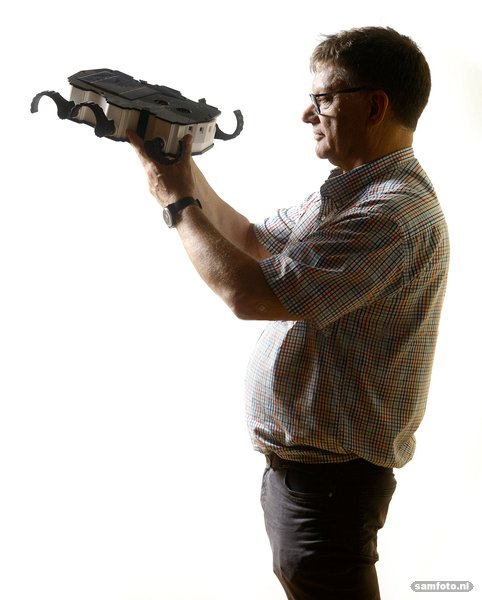View - Dr Chris Verhoeven
Dr Chris Verhoeven, theme leader of Space Robotics at the TU Delft Space Institute, is a man of many tales. What’s his vision on space? Millions of years from now, electric animals will have colonised our solar system.
People have no business being on the moon or on Mars. We’re not built for that. Everything we know about space now, we know from space robots. The real heroes of space travel are the Pioneers, the Voyagers, Spirit, Opportunity. Robotics is Evolution 4.0. Looking back 65 million years, we have the extinction of the dinosaurs. Looking forward 65 million years, our solar system will be populated by self-replicating electric creatures. We humans will probably have ceased to exist, but we will have produced this electric animal species.
David Abbink (robot professor at TU Delft, ed.) and I came up with this paradigm about five years ago. We followed nature’s example. Each type of robot is a step in evolution, each with its own application, just like animals. We might compare a pocket cube, a 10 x 5 x 5 cm nanosatellite, to a virus. These organisms are not self-contained satellites, but inside a larger body – such as the atmosphere of a planet – they can take reliable measurements. The slightly larger nanosatellites can live in swarms, which together can form large instruments, such as the Dutch Olfar project, a low-frequency radio-telescope in orbit around the moon.
Another recent example is the Lunar Zebro, a small insect-like, 1.5-kilo robot that we want to send to the moon in 2022 with iSpace's Hakuto-R mission. Large rovers like Curiosity on Mars are annoyingly slow movers, because they have to find their way on unknown terrain and cannot suffer any damage. Lunar Zebros can go ahead of these rovers to explore the route, because they are small and cheap and you can afford to miss a few from a swarm. After that, the larger rover can travel a lot faster with less risk. Zebros can search for water, explore caves for habitation and build a navigation system. Together they can also be the ultimate radio telescope on the moon. We might be able to use it to look back in time to the big bang and find exoplanets that produce radio signals pointing to a magnetic field that protects life.
But before we get that far, we want to test whether the main parts of the rover, the radio and the camera, can survive on the moon. We are currently designing and building this LEAP mission. We have to deliver the flight hardware to PTScientist by mid-2020 for the final tests in order to add it to their moon lander, which will land in 2021. It would make headlines across the world: first student project on the moon! This is the result of a growing trend at TU Delft: the collaboration between the TU Delft Space Institute and the TU Delft Robotics Institute. Both work across faculties, offer good facilities and work together with highly motivated student teams.”
